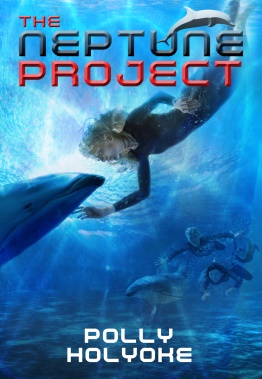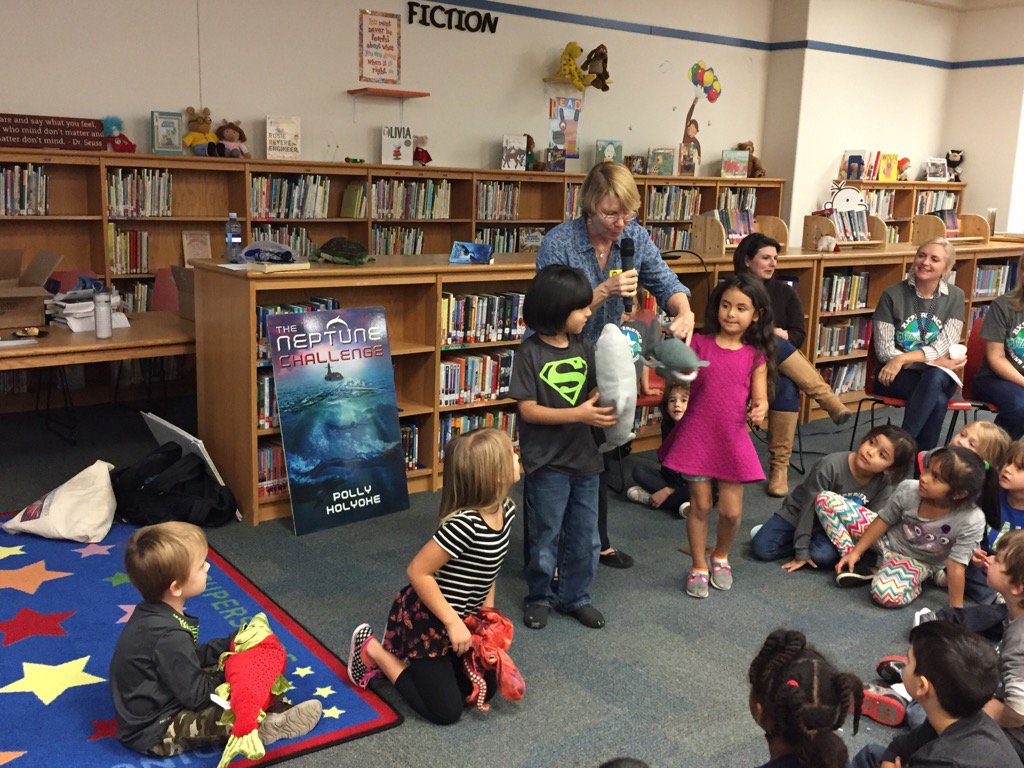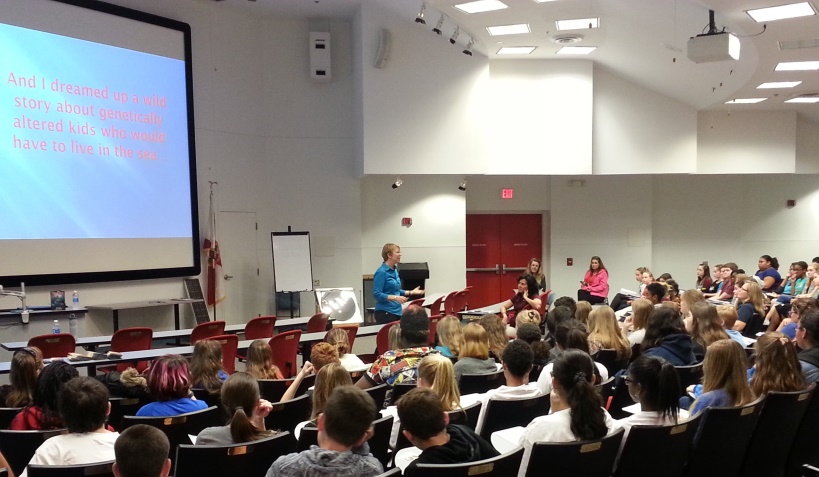Acclaimed Youth Author, Polly Holyoke, shares her perspectives on Fiction as a means to engage kids with STEM. She also shares some great reads for young people just in time for summer reading!
An educator, mother, and children’s author, I believe fiction can be a tremendously effective way to get kids hooked on STEM. I wrote my first children’s novel, The Neptune Project (published by Disney/Hyperion in 2013) in part because I wanted to encourage young people to focus on their future and imagine what the world might be like if we continue to be dependent on fossil fuels. I dreamed up a science fiction story set in a world so ravaged by climate change that desperate scientists genetically engineer their own children to live in the sea. Helped by trained dolphins, my characters struggle to survive in the dangerous and fascinating world under the waves.

Researching, writing and speaking about this book has literally changed my life and made me appreciate the importance of STEM in whole new ways. A former history major, I definitely did not know the science I needed to write a convincing story full of genetics, marine biology and oceanography. I dove right in, so to speak, and along the way, I learned a great deal about the problems facing our oceans, the amazing and ethically challenging advancements occurring in genetics, and the efforts scientists around the globe are making to fight climate change. This knowledge has enriched my life and made me an even more ardent environmentalist than I was before.
Because my book has been selected to the Bluebonnet Master List here in Texas and similar state lists in Ohio, Florida, Hawaii and Maryland, I spend a good part of the school year now traveling to these places. Schools bring me in to speak to students about the importance of writing, but my assembly is also packed with information about oceanography and the causes of climate change.


The great news is, my book is making students think about climate change and our amazing oceans. Kids come up to me all the time in schools and say things like, “I had no idea all that cool stuff was down there in the ocean,” or, “I’m not really into science, but it would be awesome to be a marine biologist when I grow up,” or “I didn’t really understand what climate change could do to our planet. We gotta do something to stop it!”
A well-written fiction novel can do this—it can grab the interest of students who don’t see themselves as STEM kids and fire their imaginations. When students read about characters in a book, they share their adventures. All sorts of environmental issues and science itself can become more visceral and compelling. Recently authors have been producing excellent novels with strong STEM elements, and we should be exploring ways to encourage young people to find and read them.
STEM Workshops
Florida school librarian Ana Woodbrey and I led a workshop at her state media specialists’ conference last fall on the topic of using fiction to get kids fired up about science, technology, engineering and math. With participants we brainstormed a list of good STEM novels, came up with creative ways to use them in the classroom and to organize school-wide STEM events. A link to an annotated list of those titles is included below.
Ana went on to plan and orchestrate a fabulous STEM event. 200 students from 12 different middle schools in the Brevard Public Schools District read The Neptune Project and then came to the Florida Solar Energy Research Center in January to participate in a series of STEM sessions. These kids had a chance to listen to an expert on dolphin cognition, engineers working on a robotic sea probe that senses and retrieves plastic, solar energy experts, an environmental group dedicated to preserving the Indian River Lagoon, and a Q&A session with me.


As I answered their thoughtful questions, it became apparent to me that the students had grasped the environmental issues I’d been trying to highlight in The Neptune Project, and they were enthusiastically making STEM connections I hadn’t even considered. That day I saw firsthand how effective fiction can be for getting kids thinking about STEM.
Other STEM Literature
There are dozens of wonderful fiction titles out there with strong STEM elements. Thanks to Andy Weir’s novel, The Martian and the film that followed it, job applications to NASA have soared. Neil Shusterman’s Tesla’s Attic will make kids think about inventing and astronomy. His Unwind series or Nancy Farmer’s House of the Scorpion will encourage young readers to confront the ethics of cloning. Dark Life by Kat Falls will make them wonder about the possibility of homesteading on the ocean floor. Karl Hiaasen’s Hoot and Flush will help kids to understand that protecting the environment is a fight that can start at home and that kids really can make a difference.
Summer is almost here, and with it an excellent chance to introduce members of your family, your young friends or your students to the amazing world of STEM through engaging and thought-provoking fiction.
About Polly:
Polly Holyoke graduated Phi Beta Kappa, summa cum laude from Middlebury College and earned her teaching certificate from the University of Colorado. Her second children’s novel, The Neptune Challenge, was published in 2015. She lives in Plano, TX and continues to speak and teach in schools across the country. You can find out more about her books and the programs she offers at: www.pollyholyoke.com.
Here is a link to an annotated list of good fiction novels with strong STEM elements for young people: http://www.pollyholyoke.com/resources-for-educators.php.







Add comment